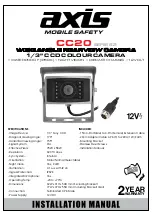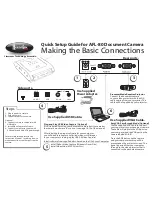
V1.02
Thom Hogan’s Complete Guide to the Nikon D300
Page 619
corner falloff at 17mm, but not enough to worry about for
most situations.
When you use the internal Speedlight, you need to be aware
that the flash needs some time to recharge between flashes.
Nikon doesn’t state a recycling time specification, but
generally, it’s only a few seconds (about 2 seconds best case
has been my observation, depending upon whether the flash
fired at partial power or full power). If you attempt to take
another picture using flash before the recharging has
completed, the flash may not have enough power to correctly
illuminate your picture.
I said that the internal flash is low power. You may wonder
what that means. The GN at ISO 100 for the internal
Speedlight is 39 (12m) for TTL operation, 42 (13m) for Manual
flash operation. That would be 56 (17m) for TTL and 59 (18m)
for Manual flash at ISO 200. That compares to a GN of at
least 62 (19m) on an SB-800 at the same 17mm coverage area
at ISO 100 (and the SB-800 can provide even more light with
longer lenses). What’s that mean for photographic situations?
For a subject at 10 feet and ISO 100, the internal Speedlight
would require ~f/4, while the SB-800 would require f/6.3.
That’s a difference of more than one stop.
In practical terms, here’s what the internal flash is capable of:
ISO 100 200
400
800
1600
Range in Ft
Range in M
f/1 f/1.4
f/2 f/2.8
f/4
3’3” – 27’11”
1.0 – 8.5m
f/1.4 f/2
f/2.8
f/4
f/5.6
2’4” – 20’
0.7 – 6.1m
f/2
f/2.8
f/4
f/5.6
f/8
2’ – 13’9”
0.6 – 4.2m
f/2.8
f/4
f/5.6
f/8
f/11
2’ – 9’10”
0.6 – 3m
f/5.6
f/5.6
f/8
f/11
f/16
2’ – 6’11”
0.6 – 2.1m
f/8
f/8
f/11
f/16
f/22
2’ – 4’11”
0.6 – 1.5m
f/11 f/11 f/16 f/22
f/32
2’ – 3’7”
0.6 – 1.1m
f/16 f/16 f/22
f/32 f/45
2’ – 2’7”
0.6 – 0.8m
Red apertures not available in Program exposure mode
Blue apertures not available on most lenses
There are a few things you should note about the above table:
















































